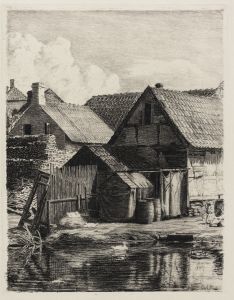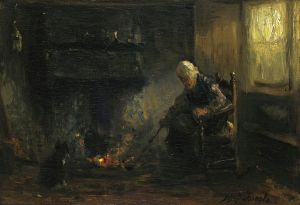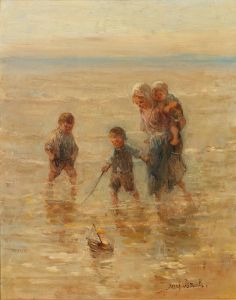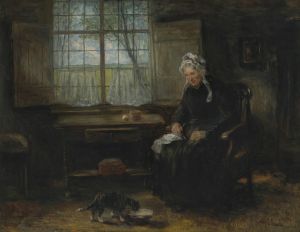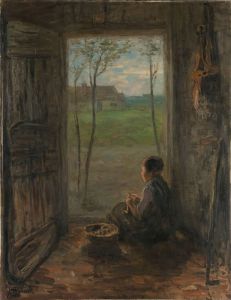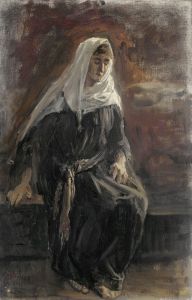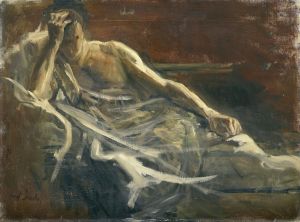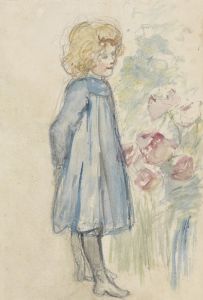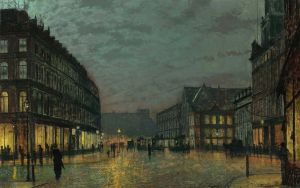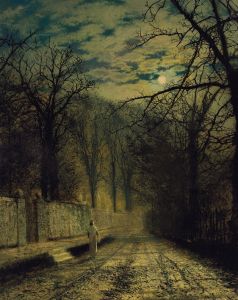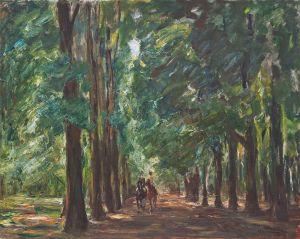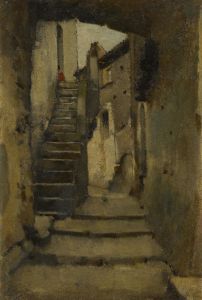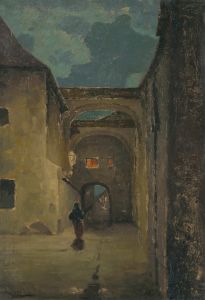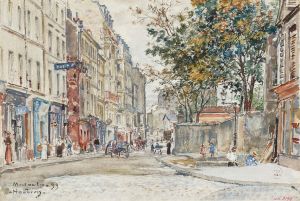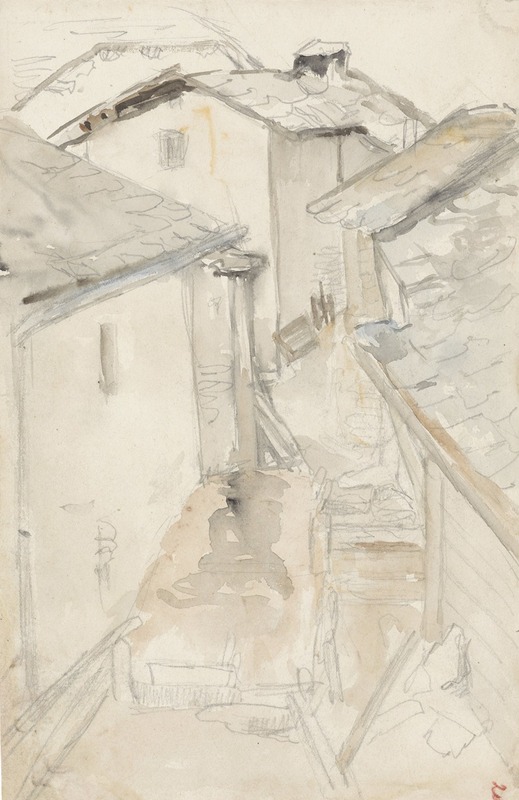
Steegje tussen oude huizen
A hand-painted replica of Jozef Israëls’s masterpiece Steegje tussen oude huizen, meticulously crafted by professional artists to capture the true essence of the original. Each piece is created with museum-quality canvas and rare mineral pigments, carefully painted by experienced artists with delicate brushstrokes and rich, layered colors to perfectly recreate the texture of the original artwork. Unlike machine-printed reproductions, this hand-painted version brings the painting to life, infused with the artist’s emotions and skill in every stroke. Whether for personal collection or home decoration, it instantly elevates the artistic atmosphere of any space.
"Steegje tussen oude huizen" (Alley between Old Houses) is a painting by the Dutch artist Jozef Israëls, who was a prominent figure in the Hague School, a group of artists known for their realistic and often somber depictions of rural life in the Netherlands during the late 19th century. Israëls was born on January 27, 1824, in Groningen, Netherlands, and he became one of the most influential Dutch painters of his time.
The painting "Steegje tussen oude huizen" exemplifies Israëls' skill in capturing the everyday life and environment of the common people. The work depicts a narrow alley flanked by old, weathered houses, which is characteristic of the small, intimate urban scenes that Israëls often portrayed. The alley is likely situated in a Dutch village or town, reflecting the artist's interest in the humble and often overlooked aspects of life.
Israëls' use of light and shadow in this painting is particularly noteworthy. He employs a muted color palette, dominated by earthy tones and soft, diffused light, which enhances the sense of tranquility and timelessness. The texture of the old houses, with their worn facades and rustic charm, is rendered with meticulous attention to detail, showcasing Israëls' technical proficiency and his deep appreciation for the subject matter.
The composition of "Steegje tussen oude huizen" draws the viewer's eye into the depth of the alley, creating a sense of perspective and inviting contemplation of the scene. The painting does not feature any human figures, which is somewhat unusual for Israëls, who often included people in his works to convey narratives or emotions. In this case, the absence of figures allows the viewer to focus entirely on the architectural elements and the atmosphere of the setting.
Jozef Israëls' work was highly regarded during his lifetime, and he received numerous accolades and honors. He was a member of several prestigious art academies and societies, including the Royal Academy of Art in Amsterdam and the Royal Academy of Fine Arts in Antwerp. His influence extended beyond the Netherlands, and he was respected by artists and critics across Europe.
"Steegje tussen oude huizen" is a testament to Israëls' ability to find beauty and significance in the ordinary. The painting captures a moment of quiet reflection, offering a glimpse into the simple, yet profound, aspects of daily life in the Netherlands during the 19th century. Israëls' work continues to be celebrated for its emotional depth, technical mastery, and its contribution to the realist tradition in art.
Today, Jozef Israëls' paintings can be found in major museums and private collections around the world. His legacy endures as one of the leading figures of the Hague School, and his works remain a source of inspiration for those who appreciate the power of art to convey the essence of human experience.





